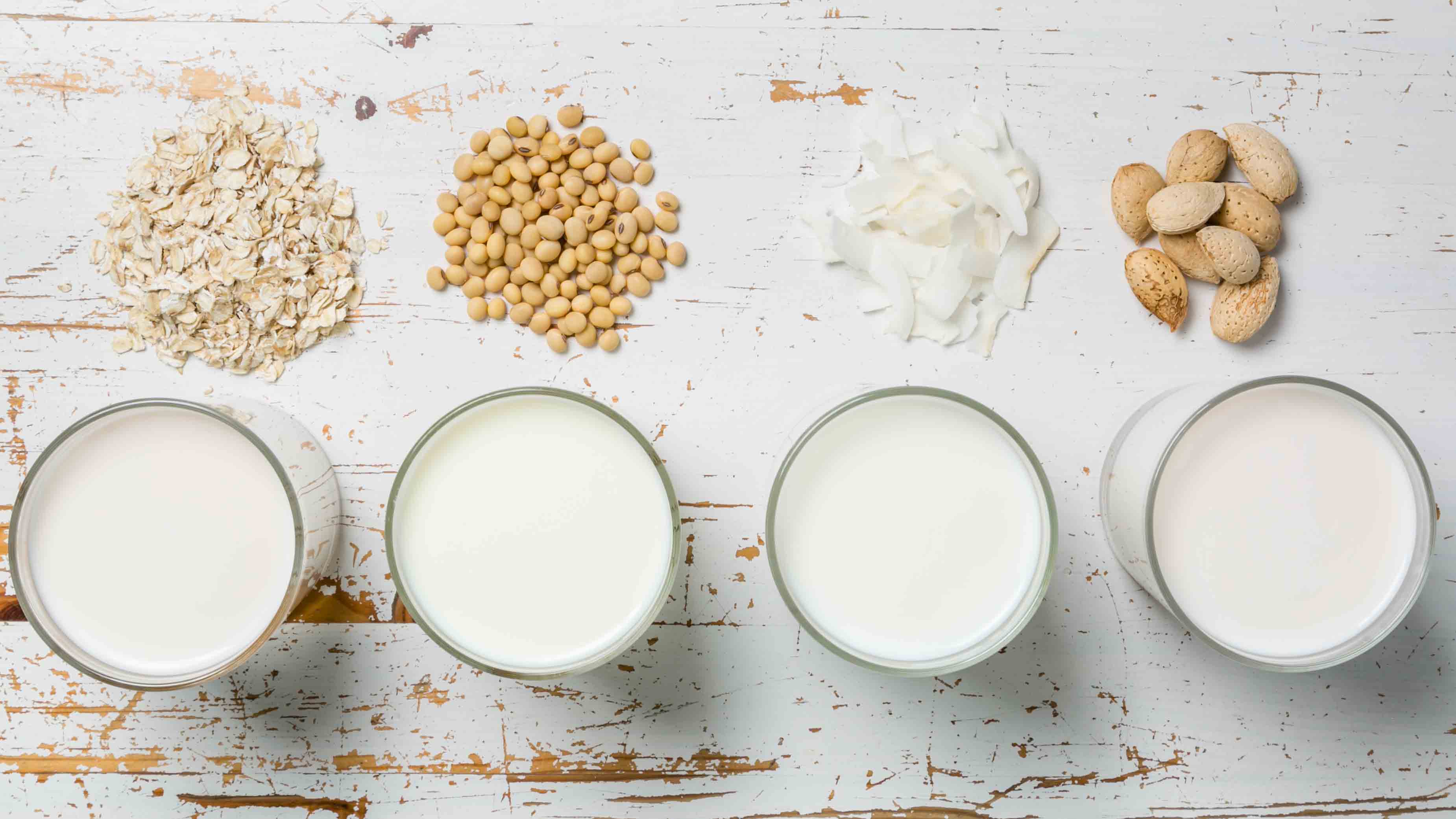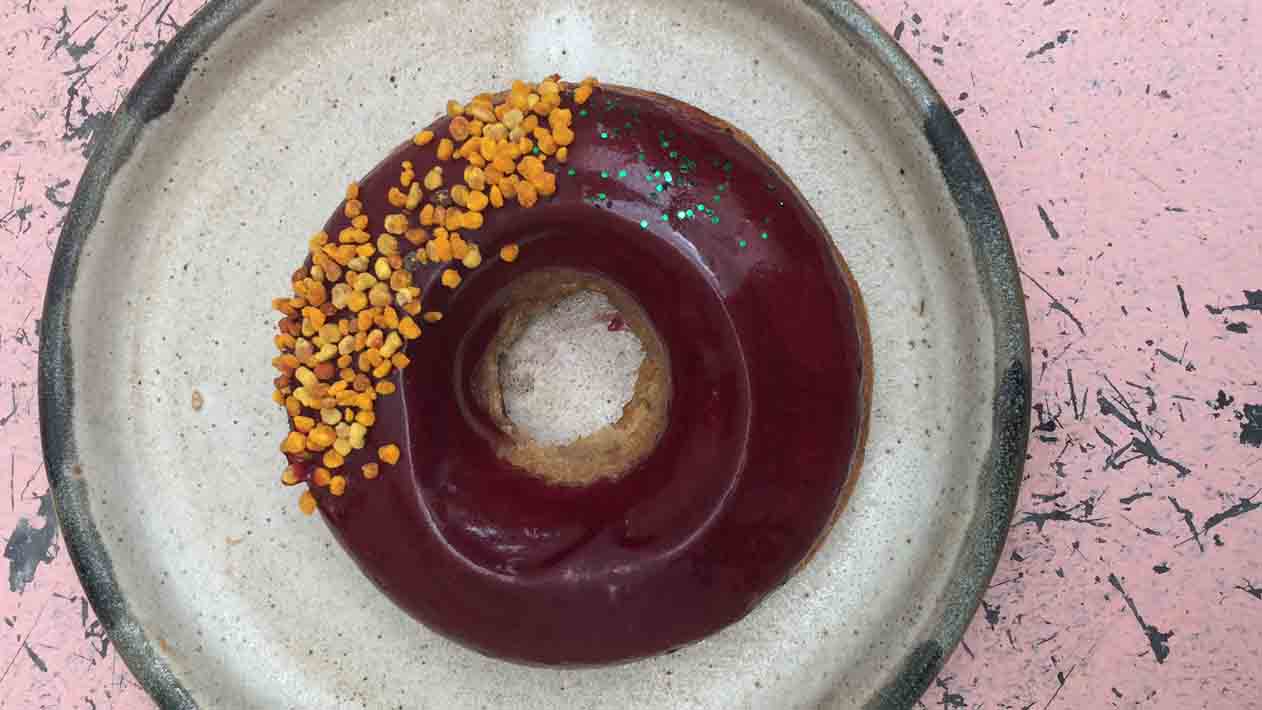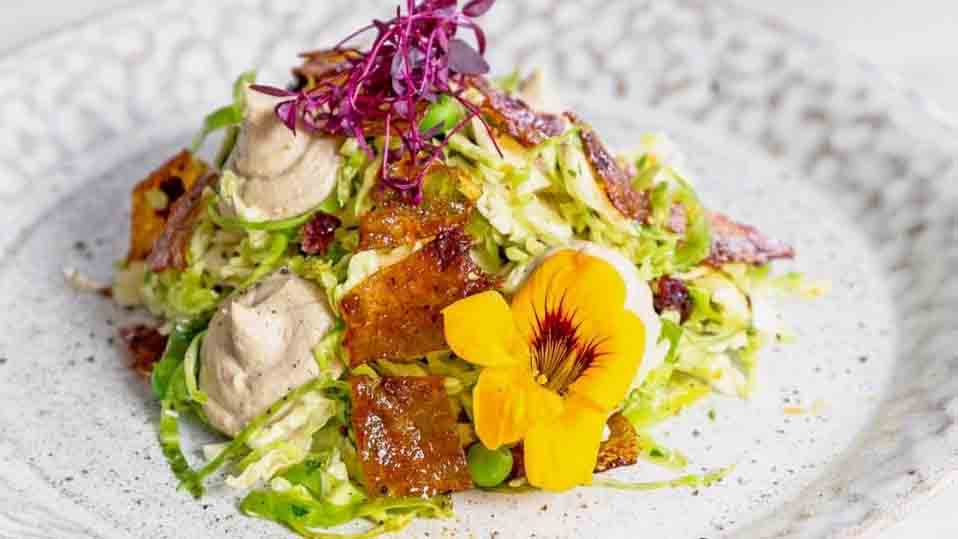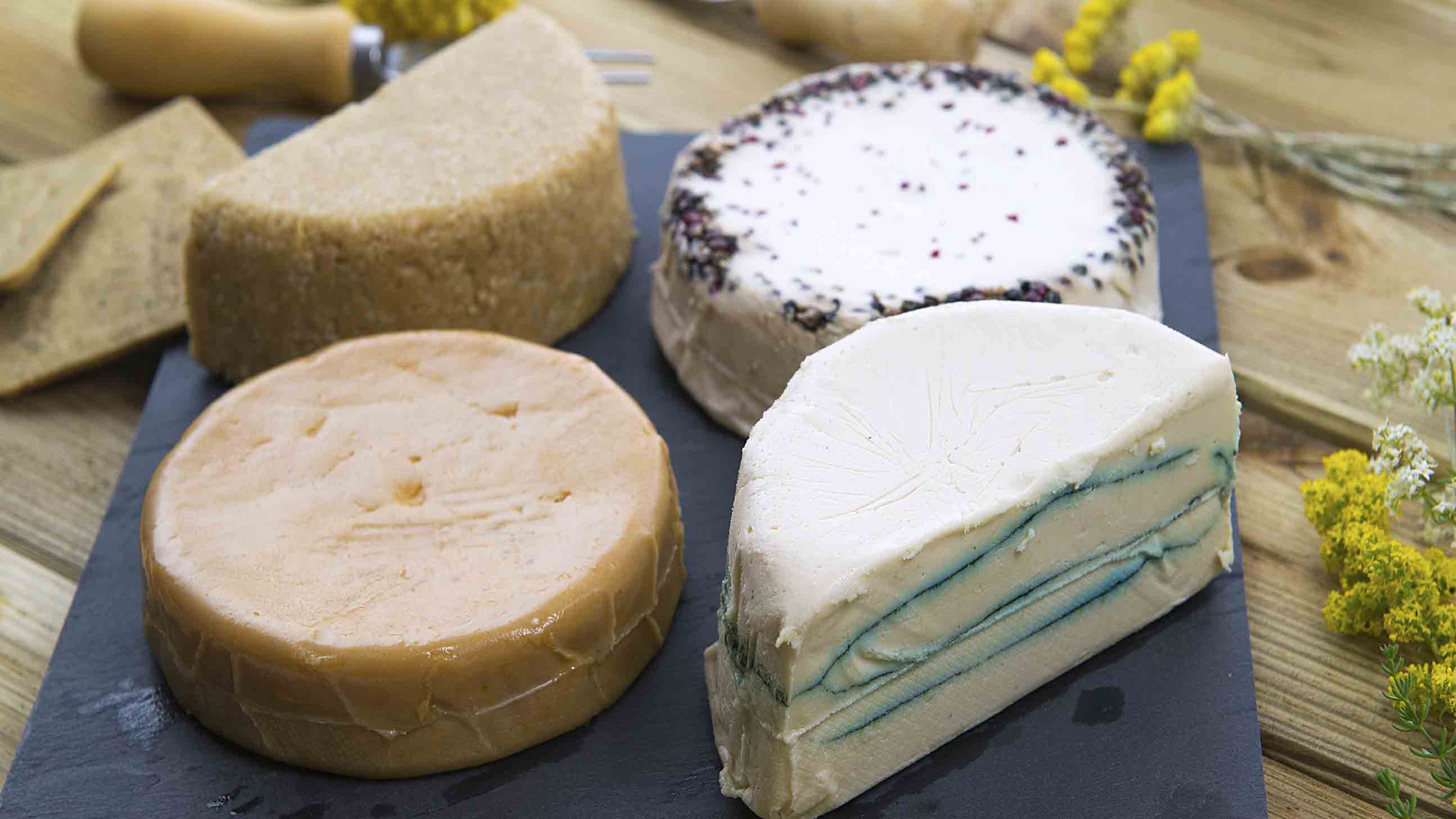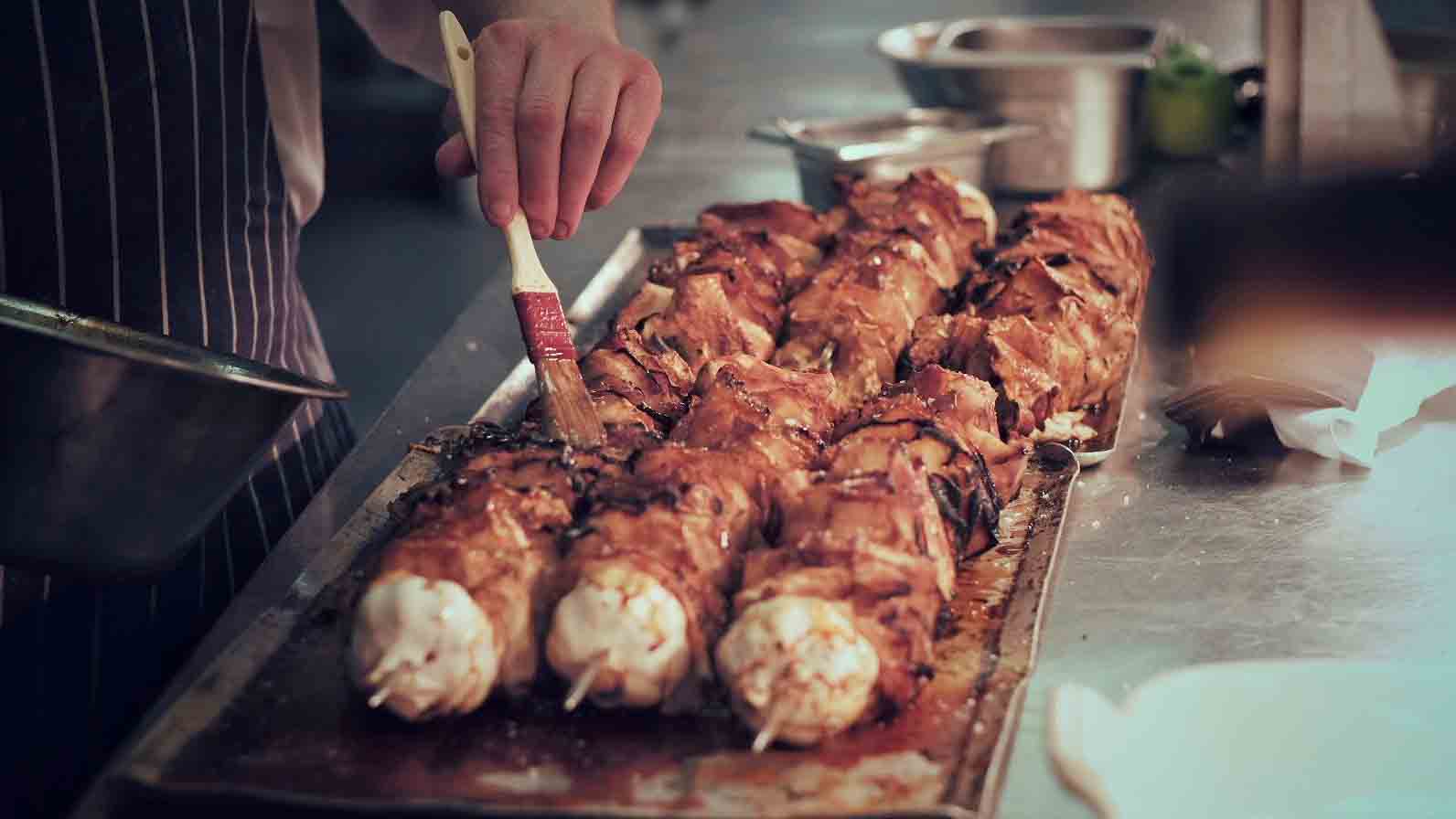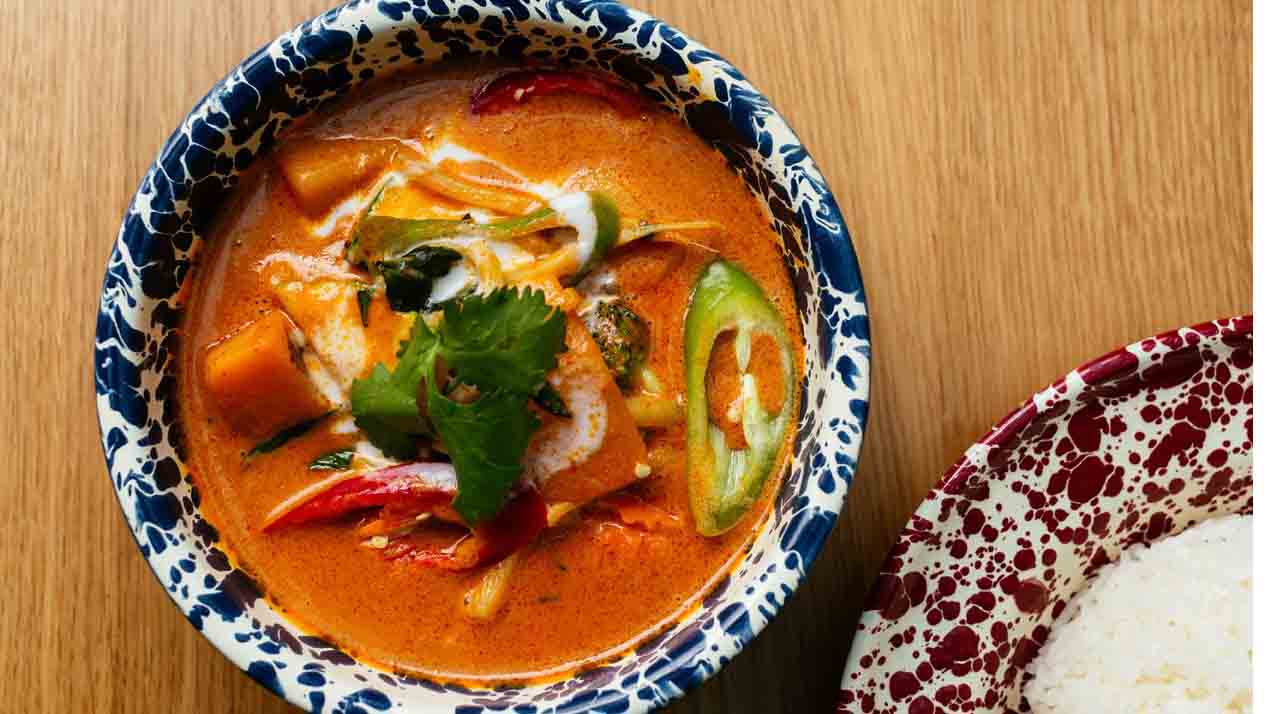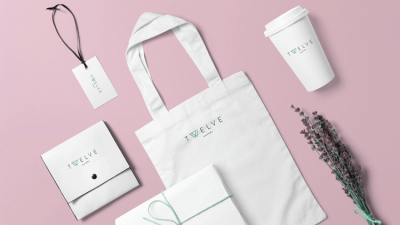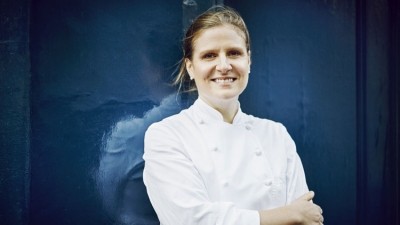Playing chicken: six vegan alternatives chefs should know about
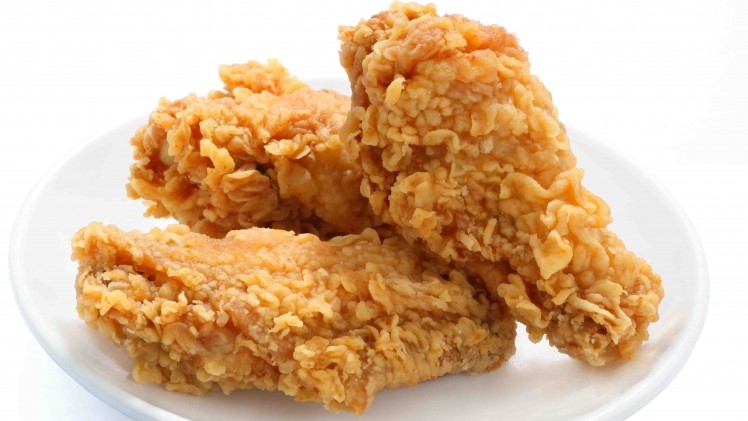
Veganism hasn’t always been cool. Not long ago the stereotypical vegan would be far more likely to be planning their next anti-fur protest with like-minded Birkenstock-wearing Morrissey fans than drinking craft beer on Brick Lane with a host of UK grime artists. But that was then, and this is now.
Veganism’s surging popularity has led variously to new businesses, plant-based food festivals, weekly markets, and Vegan Night events that look more like hipster parties than plant-based foodie meet-ups. However, the movement isn’t solely confined to the hipster scene anymore: it has hit the high street. Hard.
Having heard the sound of the ‘green pound’ dropping into the tills of independent restaurants that have taken the time to innovate with their meat and dairy-free options, larger chains have followed in their plant-based footsteps and stepped up their game. The likes of Wagamama, Pizza Hut, Zizzi and even Toby Carvery have all introduced respectable quantities of vegan items onto their menus .
Despite the advances in choices for vegans, many big players in the restaurant industry are “only scratching the surface of the vegan category,” says Paul Downing, sales director at vegan pudding brand Freaks of Nature, speaking at the VegFest plant-based trade show earlier this year. “You only have to look around VegFest to see the quality, creativity and quantity of what is available,” he says.
So what can operators learn from the vegan community about innovation in vegan dishes, and what are they already doing? Here are six alternatives to non-vegan-friendly foods…
Milk
Meat-free lifestyles are not particularly groundbreaking in 2018. However, going milk-free has been a rather alien concept until recently. The alternative milk sector in the UK is predicted to soar by 43% over the next four years, according to data released by Informa’s Agribusiness Intelligence, with more people opting to switch to a growing number of rice, soy and nut-based milk alternatives. For the vegan scene, never has there been such a wealth of variety: soy, coconut, oat, almond, cashew, rice, hazelnut. London-based company Mylkman makes artisan nut and oat ‘mylks’, which it delivers to customers’ doors and is stocked at Gizzi Erskine’s Mare Street Market and Selfridge’s.
For making things that use cream some restaurants, such as Soho ice cream parlour Yorica, use plant-based milks. Others stick to fruits such as bananas which become creamy when frozen and blended. Topped with popcorn, nuts and chocolate chips, these ice creams look the same as any other sundae – they just don’t contain any dairy.
Eggs
Given the wave of innovation in the vegan sector it is unsurprising there is now a wide variety of commercial egg replacements available , some for baking and some for attempting to create scrambled and fried eggs.
Restaurants such as Mao Chow (which appears to have taken its recipe from the Instagram-famous LA restaurant Ramenhood) have created imitation eggs using soy milk, sulphurous black salt and agar (a plant-based gelatine alternative) to form half an egg with a solid yolk to top noodle dishes with. Garnished with yet more vegan eggs, the mock caviar atop Mao Chow’s ‘egg’ is made from smoked carrot juice and kombu.
For thickening and binding, those clued-up on the plant-based scene use a selection of rather unusual replacements.
“We use a ‘flax egg’ which is a tablespoon of ground flaxseed and three tablespoons of water,” says Rose Lloyd Owen, owner of catering company Peardrop London. The company tailors its offer to a health-conscious clientele, many of whom are vegan and/or gluten free. Lloyd Owen says she finds the flax egg to be the most effective way of making vegan burgers and baked goods for her discerning clients.
Rose Mann, founder of Notting Hill restaurant Farm Girl, uses plant and fruit purees for her egg-free baking, citing apple puree, potato starch and ground almonds as the base for the restaurant’s popular and oft-Instagrammed doughnuts. While the market is rich in products to replace non-vegan ingredients, many of the more health-focused restaurants tend to lean towards more natural alternatives as opposed to artificial plant-based additives.
It’s also easy to forget that many cocktails contain egg whites, not least whisky and pisco sours, where omitting the egg will ruin the composition of the drink. Until the discovery of ‘aquafaba’, such drinks were off limits to vegans, but in December 2014 a French musician (a vegan, of course) discovered the water from canned beans such as chickpeas can be made to form foams similar to those created by protein isolates (eggs). He shared his knowledge on a French blog and the vegan community picked up on it.
Camilla Fayed’s Farmacy, in Notting Hill, uses the ingredient in its desserts, and Chantelle Nicholson, chef-patron at Tredwells, uses whipped chickpea water at least 24 times in her cookbook Planted: A Chef’s Showstopping Vegan Recipes. She also uses aquafaba to make meringues and mayonnaise in the restaurant.
Bacon
Bacon is one of the few meats that vegans on social media often mention they crave, so unsurprisingly the vegan community has invented a number of impressive ways of mimicking the much-missed meat.
At Peardrop, Lloyd-Owens uses rice paper brushed with maple syrup, tamari, garlic powder, liquid smoke, smoked paprika and olive oil to create smokey, salty and crispy strips with which to top her salads. US vegan export By Chloe uses shiitake mushrooms with similar seasonings to Lloyd Owens’ to create crunchy, smoky ‘bacon’ bits to top its macaroni and cheese and its Kale Caesar salad.
Plant-based YouTube star Gaz Oakely, who runs the recipe channel AvantGardeVegan, used to be a self-confessed “hardcore meat-eater” as well as a chef, before turning vegan and starting to share his recipes. Oakley’s approach towards creating replacements for meats and cheeses is more ‘cheffy’ than perhaps some of the vegan YouTube community’s other big names, and his bacon replacement is one of the more complex offerings on the scene.
Oakley uses two separate doughs made from wheat gluten – one red and flavoured with smoky flavours, the other white with milder seasoning – to make a block of ‘streaky seitan’. Often called ‘meat wheat’ due to its firm texture and its aesthetic similarity to animal protein, seitan can be kept in the fridge to be sliced and fried whenever a recipe calls for bacon.
“I was really excited for the bacon recipe video to go live, it is so good for dishes I used to make in the past, such as carbonara,” he says. “I’ve written a Christmas recipe book, and it uses the bacon recipe a lot because that is one of the prevalent Christmas flavours people tend to miss.”
Cheese
One of the most common reasons people give for not being able to stick to a vegan diet is their love of cheese. Vegan cheese, however, has been one of the most difficult things for commercial producers to replicate without using dairy products and, until recently, most dairy-free alternatives were regarded as being pretty poor . Now though, most supermarkets stock several varieties, and restaurants are increasingly opting to make their own versions to stay ahead of the market.
Plant-based pizzeria Picky Wops operates two restaurants in Peckham and Fulham. The pizzeria wasn’t always vegan, but today’s diners are given the option of eight different varieties of vegan cheese, catering for all needs, including those on nut-free and soy-free diets. Made using different processes, including blending and straining nuts, and using probiotic cultures such as penicillium candidum to allow soy milk to curdle into cheese that grows a signature coating of mould, its options include coconut, cashew or rice mozzarella; smoky coconut cheese; vegan parmesan; almond ricotta; cashew camembert; and soy cream cheese.
More upmarket restaurants such as Redemption, in Notting Hill and Shoreditch, use an ingredient called ‘nutritional yeast’ (often nicknamed ‘vegan crack’) to make homemade vegan versions of parmesan to top dishes. Its brown rice penne bolognese comes topped with roasted pecan ‘parmesan’, made from deactivated yeast blended with milled roasted nuts. For its courgetti dish with tomato sauce it uses raw brazil nuts instead of toasted pecans for the cheese substitute, thus catering to the subsection of vegans who only eat raw foods.
Beef and lamb
Some meats are harder to mimic than others. Famous in the US, the Beyond Burger (which will soon be available at Honest Burgers in the UK) and the Impossible Burger were both the result of laboratory experiments to recreate the exact look, taste and smell of animal flesh. The former contains wheat protein, coconut oil, potato protein and laboratory-developed ingredient heme, taken from soy leghemoglobin, which has only just been approved by the FDA and allows the burger to ‘bleed’. The Impossible Burger, meanwhile, is made using a mixture of pea protein isolates, yeast, coconut oil and various vegetable juices such as beetroot used in place of heme.
Most restaurants don’t have the luxury of Silicon Valley backing, but that has not stopped the likes of Noma in Copenhagen and Flank in London – a restaurant notable for its nose to tail focus on meat – from experimenting with vegetables to great effect. Flank chef-patron Tom Griffiths recently held a vegan five-course tasting dinner, at which he served a celeriac shawarma to mimic a doner kebab on a spit.
“I don’t believe in fake meat, so I’ve cooked vegetables. This is the hardest dinner I’ve done,” says Griffiths, who grills great spits of celeriac over Big Green Egg ceramic grills. Brushed with his ‘liquid vegan gold demi-glace’ made with sap, smoked onions and roasted celery, the fake doner kebab looks alarmingly like the real deal.
Noma takes a similar approach, and serves a celeriac shawarma as part of its Vegetable Season menu. Made from celeriac sliced into wafer-thin layers, Noma’s ‘doner’ is constructed around a blackcurrant branch . The layers are dressed with purées including celeriac purée with truffle juice, summer truffle purée, and a linseed, porcini mushrooms and celery reduction. Two hours are spent assembling a shawarma tower, which is grilled on a barbecue, topped with apples spiked into the celeriac with pine twigs.
Back in London, Indian Accent in Mayfair creates a mince keema dish using soy that would fool any carnivore, and across the restaurant scene the likes of carrots are being smoked to become ‘hot dogs’, and oyster mushroom stems sliced and braised as ‘scallops’. Many vegans prefer these more naturalistic alternatives to lab-engineered options.
Chicken
Chefs are becoming increasingly innovative with their cruelty-free chicken alternatives. One of the biggest (and simultaneously the smallest, size-wise) openings of the year in 2017 was Temple of Hackney, a vegan chicken shop that opened on the former site of a real fried chicken shop.
Using seitan, the restaurant creates impressively realistic chicken wings, burgers and goujons in the style former meat eaters would associate with the likes of KFC. The restaurant had a constant queue outside for months, and recently opened a second site in Camden to meet demand.
Taking a more natural approach, Bi f’s Jack Shack at Haunt in Stoke Newington uses the 2017 ingredient à la mode: jackfruit. It fashions chicken wings out of the fruit’s seedpods before the fruit ripens. Already big on the US vegan scene, it is proving ever popular on these shores, and is being used in place of chicken and carnitas by the likes of London street food player Club Mexicana.
Vegan pitfalls
Some foodstuffs such as Oreos and Fry’s Cream Chocolate bars are ‘accidentally vegan’ (as documented on a well-loved vegan Instagram page), but just as often newly vegan chefs find that a surprising amount of things previously assumed as vegan are not. When preparing a five-course vegan tasting dinner, Flank chef Tom Griffiths says that some of the hardest things to substitute are ingredients such as certain wines and vinegars, as well as honey.
South-east Asian dishes often rely on a base of fish sauce or shrimp paste, the pungency of which can be tricky to replicate. Saiphin Moore, founder of Rosa’s Thai, reinvented the restaurant’s entire menu at the start of this year to cater to vegan and vegetarian palates.
“Fish sauce has a very distinct flavour that’s impossible to replicate exactly,” she says. “However, for vegan dishes at our recent veggie pop-up in Soho we used a vegetarian ‘oyster’ sauce, made with mushrooms and a mixture of soy sauce and salt, to add the fermented flavour without the fishiness.”
The dish proved so popular that Rosa’s has extended the same vegan sauce to all of its sites. Elsewhere, Mandy Yin, owner of Sambal Shiok laksa bar in Highbury and Islington, has created a vegan laksa, described as ‘unfathomably good’ in a Guardian review by Grace Dent. When asked, Yin would not give away the recipe.
